After the exhibitions commemorating the centenary of the First World War, the Hunterian’s show ‘The German Revolution: Expressionist Prints’ addresses the social upheaval that brought the war to an end and was brutally crushed in 1919. Some of the artists here were associated with Die Brücke, which had been founded in 1905 (although its most famous member, Ernst Ludwig Kirchner, takes only a peripheral role in this narrative) and disbanded in 1913; but the Hunterian suggests that several of its former members may have reached their peak in 1919. Although the political revolution was crushed, the artistic rebellion could not be. Herbert Read once observed that in art, ‘there is a revolution with every new generation’. Every work in this exhibition would be considered ‘degenerate’ (if not avowedly socialist) by the Nazi regime two decades later; still, the mass production of prints made counter-revolution in this sphere near impossible.
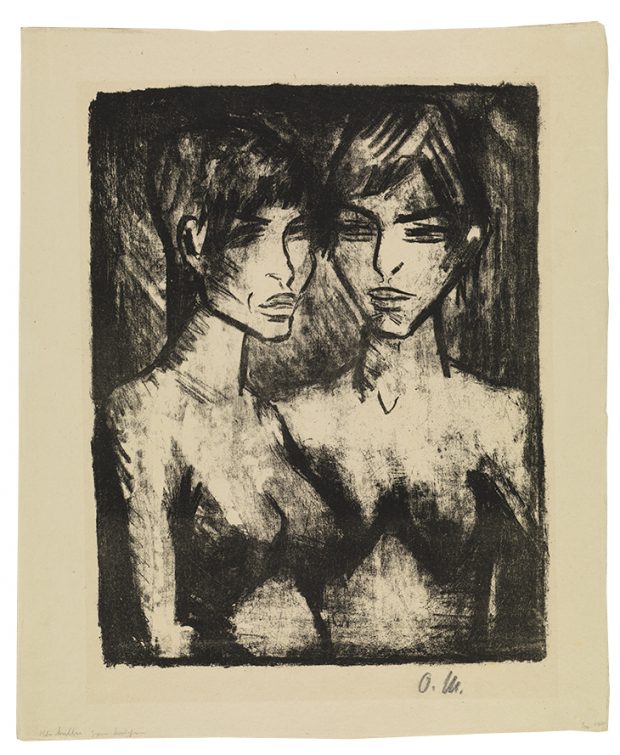
Two Girls, half-length nudes (1920), Otto Mueller. Hunterian Art Gallery, University of Glasgow
Writing in the catalogue, the curator Peter Black notes that the museum’s collection of prints, which forms the core of this exhibition, results not from bequests, but ‘planned curatorial collecting over a period of 70 years’. It is puzzling, therefore, to find some works from print cycles displayed in isolation. But the point stands that the Hunterian’s longstanding policy of collecting works on paper allowed it to get past the post-war reluctance of British galleries to take on German art.
In Storm (1906), Emil Nolde blends landscape and human interaction to depict societal anguish. Two figures morph into a stormy landscape, as the rain slashes across in long, thick shards. Nolde emphasises the depth of the woodcut imprint and, more metaphorically, its resistance to harm. Max Pechstein uses a subtler version of this technique to suggest tears in his portrait of a one-eyed mother and her child, but lithographs such as Otto Mueller’s Two Girls, Half-nudes (1920) result in far more transient figures.
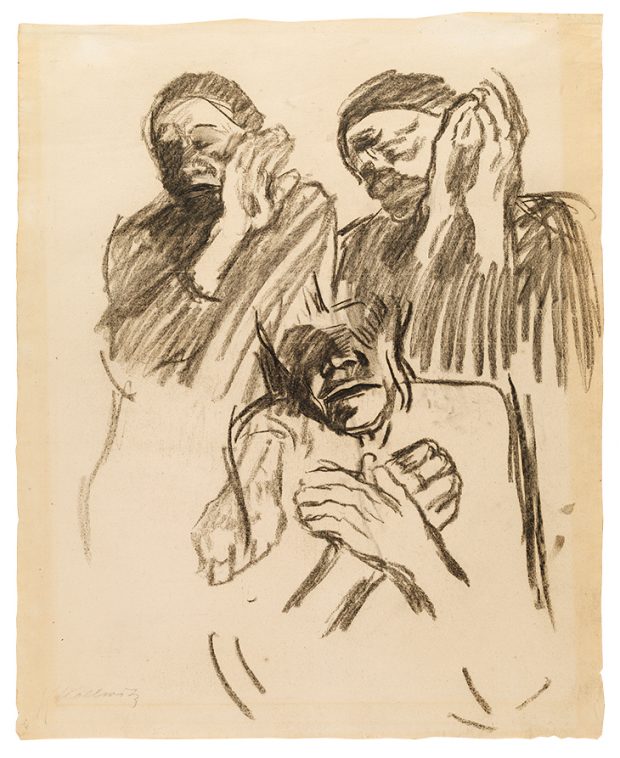
Three Studies of a Woman in Mourning (1905), Käthe Kollwitz, Hunterian Art Gallery, University of Glasgow
Käthe Kollwitz’s Three Studies of a Wailing Woman (1905) depicts the same women in three different poses. It’s possible that these studies overlap only to save paper, but their relation to one another is tellingly ambivalent. One figure raises her hand either to avoid the others or shield herself, while the others appear more self-absorbed. Yet their proximity imposes a solidarity they cannot eschew, foreshadowing the tragic and unwilling sisterhood the First World War would impose on women in Europe a decade later. Hand signals and posture are a running theme in the artist’s work. Ernest Schonfield’s catalogue essay connects Kollwitz’s obsession with dance and bodily movement to her interest in depicting working-class women: their ‘looser, less restrictive’ clothing made their body language ‘more open and direct’.
But Kollwitz is always nuanced, also using this looser clothing to remind us of the stark malnutrition of the working classes in etchings such as La Carmagnole (1901), inspired by a scene in Dickens’s A Tale of Two Cities in which the revolutionary crowd sings and dances outside a Paris prison. Kollwitz uses both hard and soft grounds to turn the figures into a collective, merging their clothing as well their flesh. Both the crowd and the guillotine in the picture recall the Terror; the style of the buildings in the background transposes the scene to Hamburg at the turn of the 20th century, and the hand gestures eerily foreshadow the Nazi salute. The metaphor of the ‘body politic’ traditionally preaches a paternalistic message of order and reason filtering downwards from the upper classes. Here, the amount of bare flesh on display inverts the analogy to emphasise that regimes, good and bad alike, are held up by the masses.
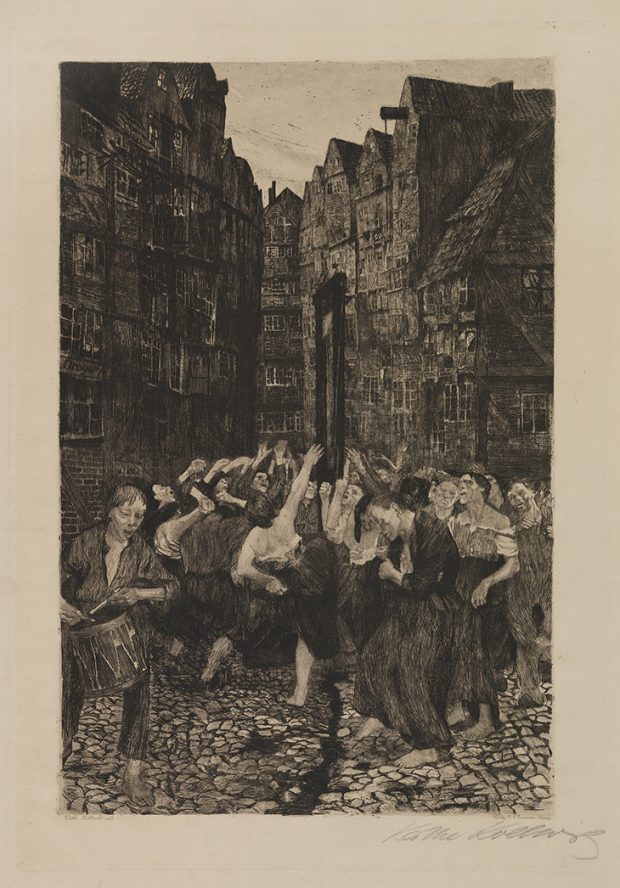
La Carmagnole (1901), Käthe Kollwitz. Hunterian Art Gallery, University of Glasgow
The final room is given over to Hell (1919), a series of 11 lithographs by Max Beckmann depicting the state of the nation, and the most substantial loan (from the National Galleries of Scotland). It is displayed, somewhat fittingly, alongside jingoistic periodicals from the early days of the First World War; Beckmann had enthusiastically volunteered as a medical orderly until he had a nervous breakdown and was invalided out in 1915. In this sequence he riffs on the archetypes of the caricature series as an established medium of political commentary. On the title page Beckmann’s self-portrait beckons the viewer to join him – guaranteeing our satisfaction, or our money back. Beckmann introduced other graphic cycles in a similar fashion, visualising himself as an on-screen narrator. As Deborah Lewer puts it in a catalogue essay, the artist ‘maintains in this way both proximity and distance from the events envisioned’.
Beckmann admired the work of William Hogarth and owned at least one of his prints. But while Hogarth’s graphic cycles blend distress with humour, Hell is far more cynical. In a dispatch from the front line in October 1914, Beckmann described the ‘wonderfully grand sounds of battle’ and the ‘immensity and terribly beautiful profundity’. His depictions of war’s aftermath, however, are intensely claustrophobic, with hands once again taking an exaggerated prominence among maimed faces and hollowed expressions. The Last Ones, the penultimate plate, shows the determination of the revolutionaries as their hopes are shattered, but there is little that could be mistaken for honour.
The series – and the exhibition – ends with The Family, which shows Beckmann’s son playing with grenades. The ‘space, distance, infinity’ that Beckmann identified in the battlefields in 1914 is nowhere to be found; nor is the revolutionary power of the mourning and despair of the exhibition’s first two rooms. ‘In my pictures I accuse God of everything that he has done wrong,’ Beckmann said in 1919. The window frame behind the figures of The Family forms a cross, but there seems little hope of an answer from the heavens.
‘The German Revolution: Expressionist Prints’ is at the Hunterian Art Gallery, University of Glasgow, until 25 August.
Unlimited access from just $16 every 3 months
Subscribe to get unlimited and exclusive access to the top art stories, interviews and exhibition reviews.

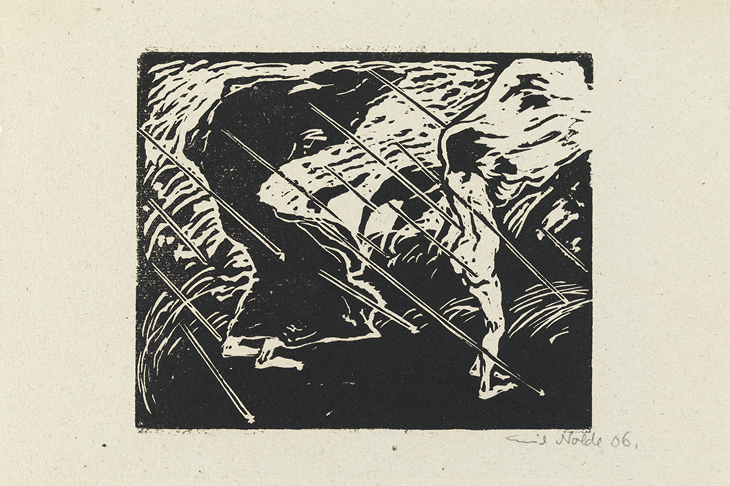
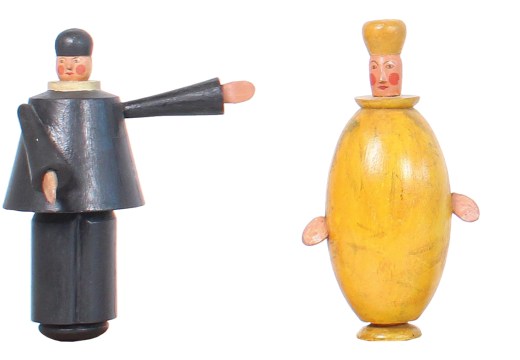
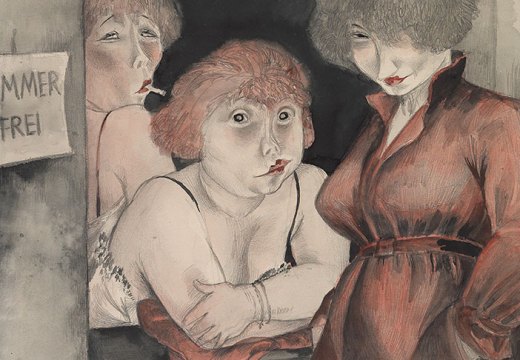
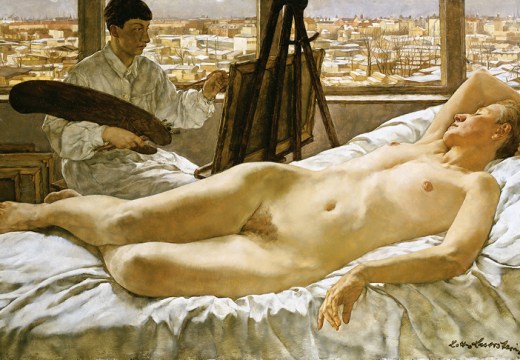









![Masterpiece [Re]discovery 2022. Photo: Ben Fisher Photography, courtesy of Masterpiece London](http://www.apollo-magazine.com/wp-content/uploads/2022/07/MPL2022_4263.jpg)
Has the Fitzwilliam lost the hang of things?